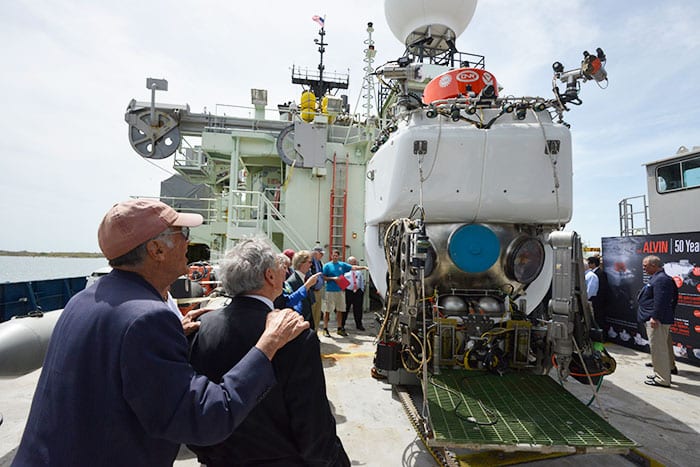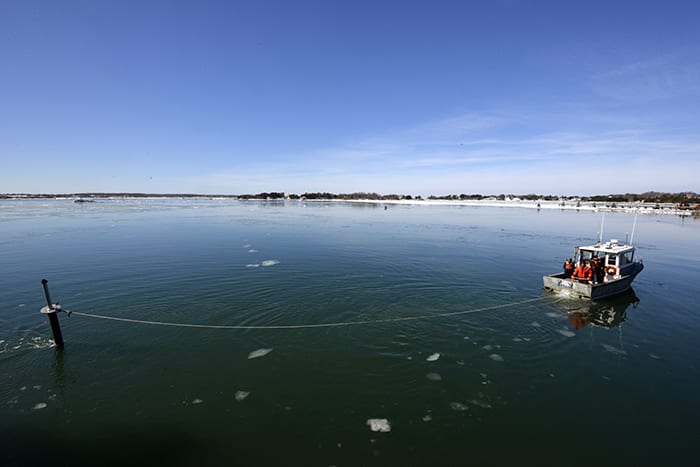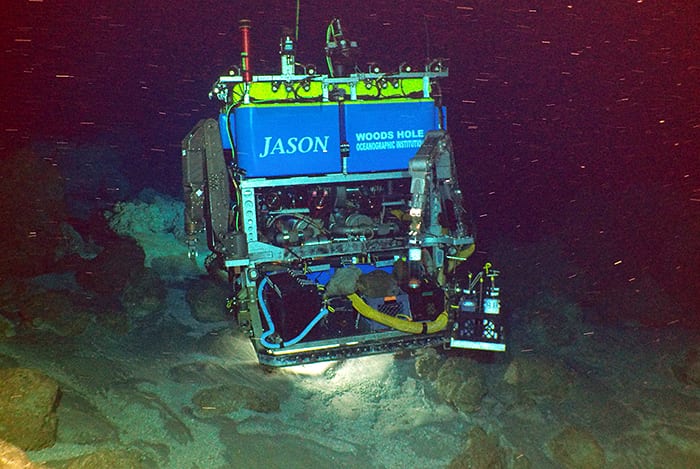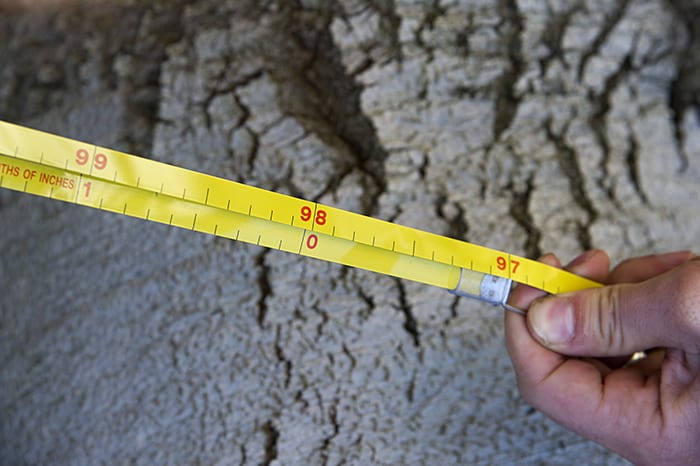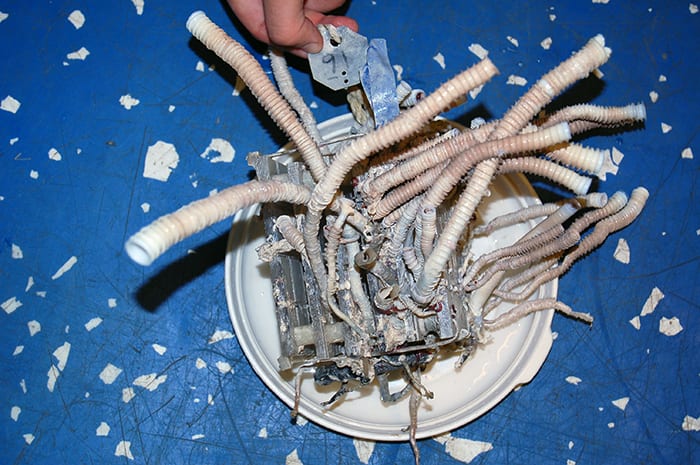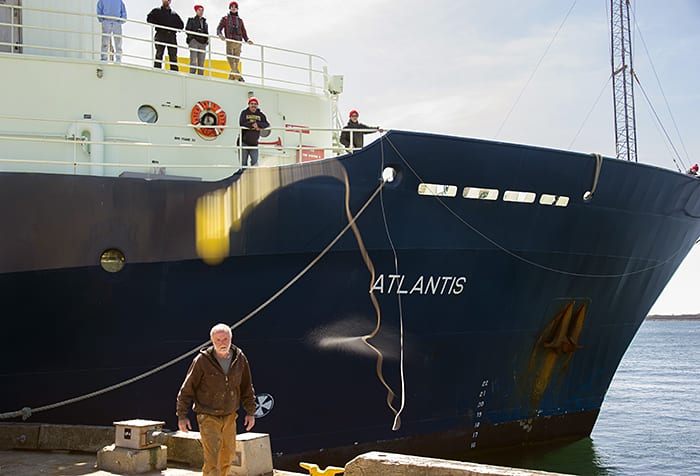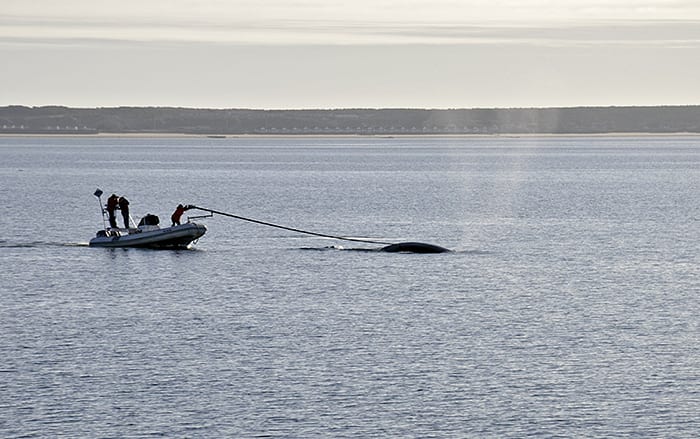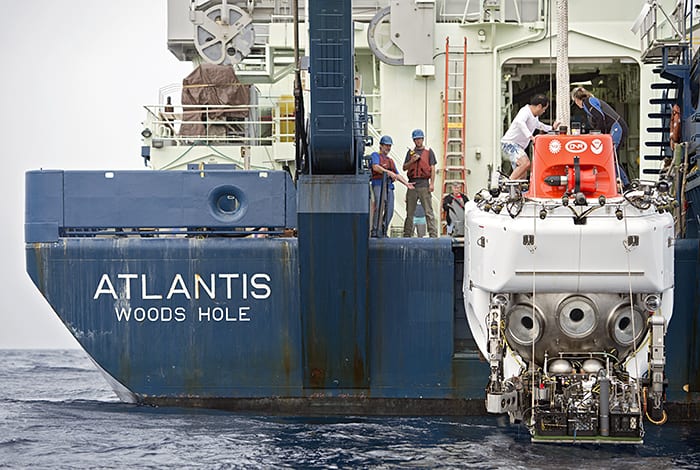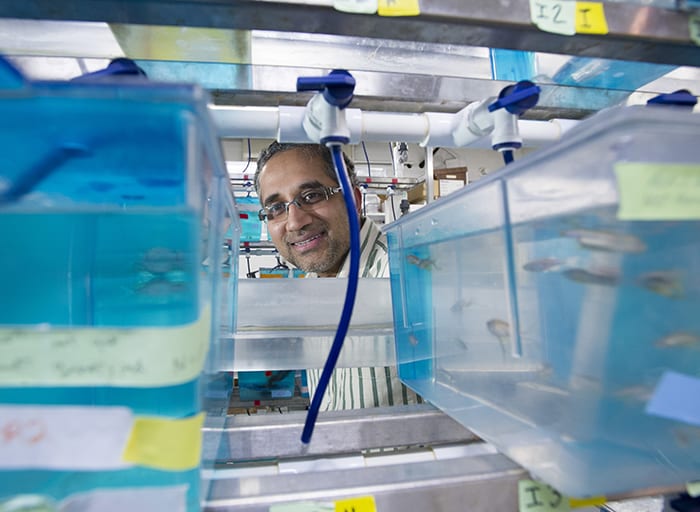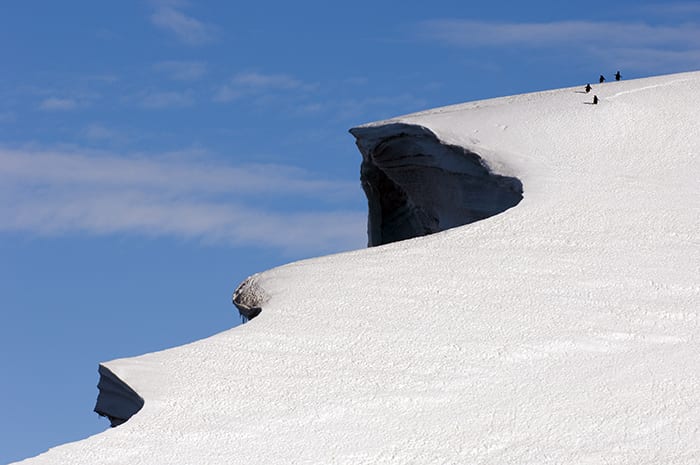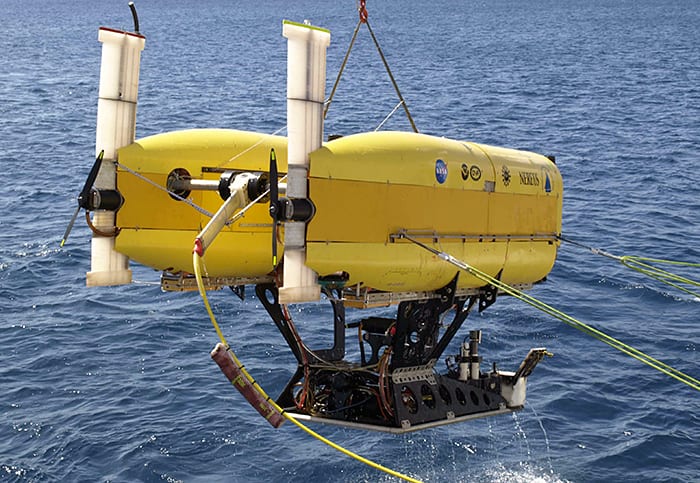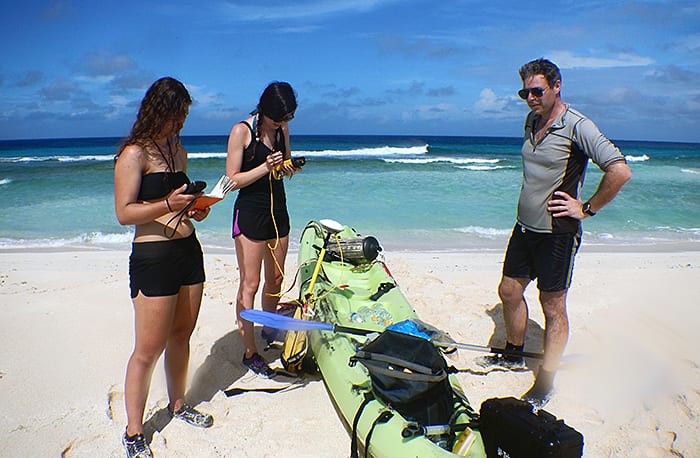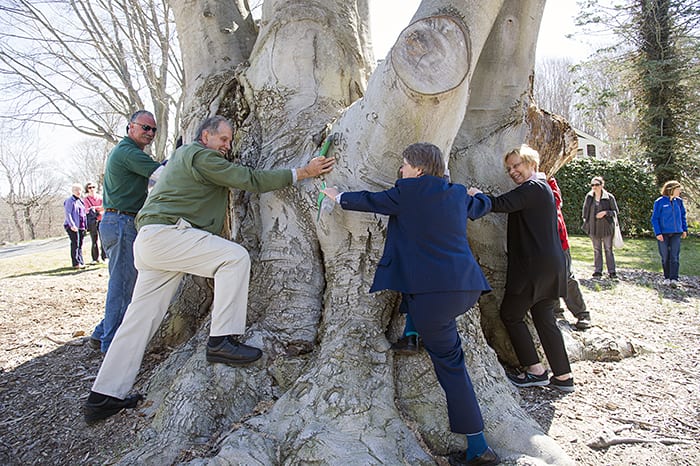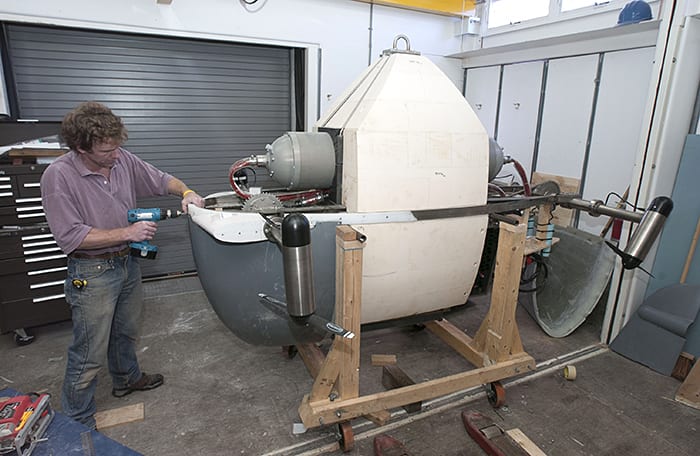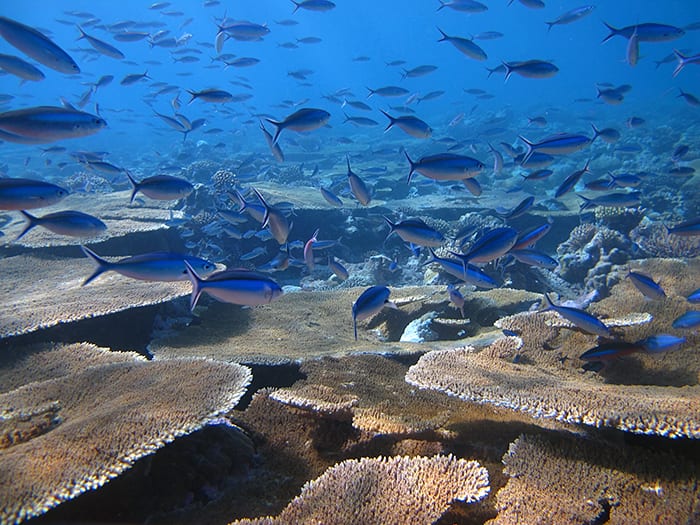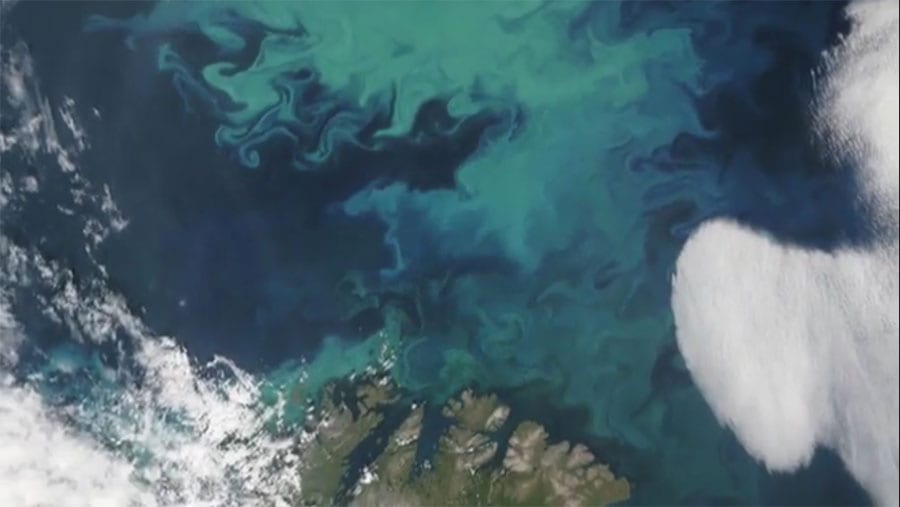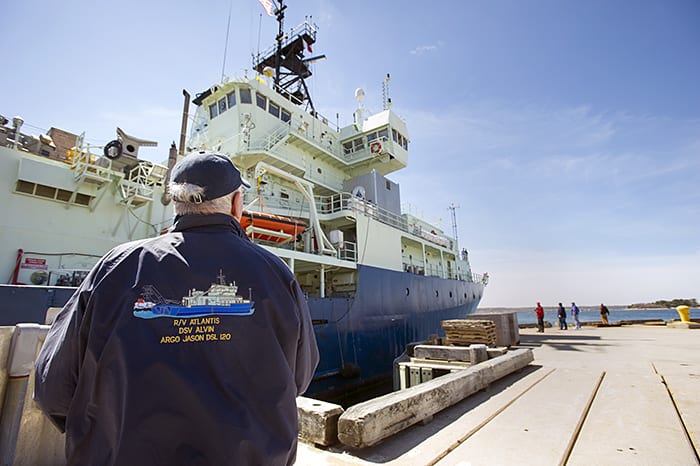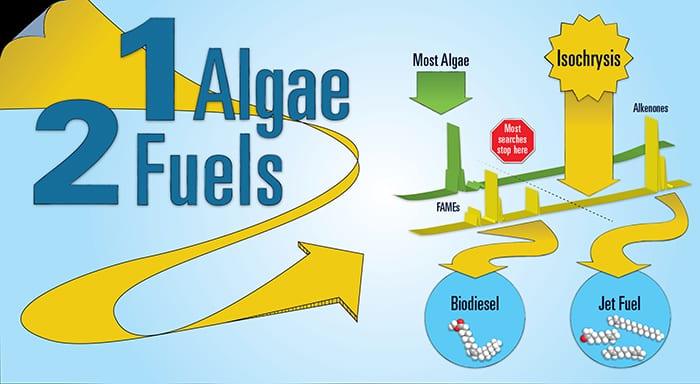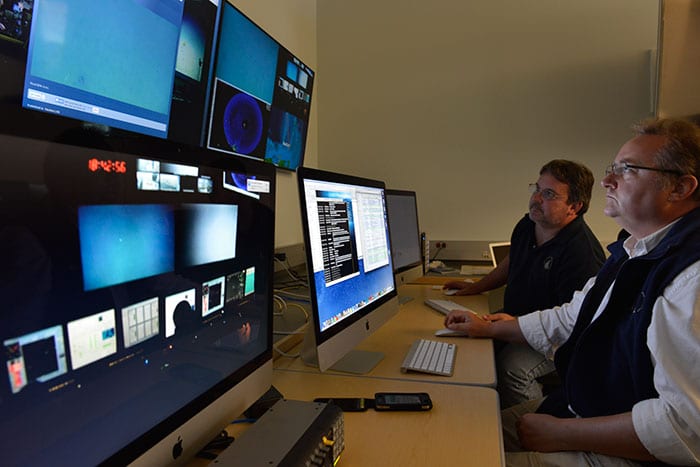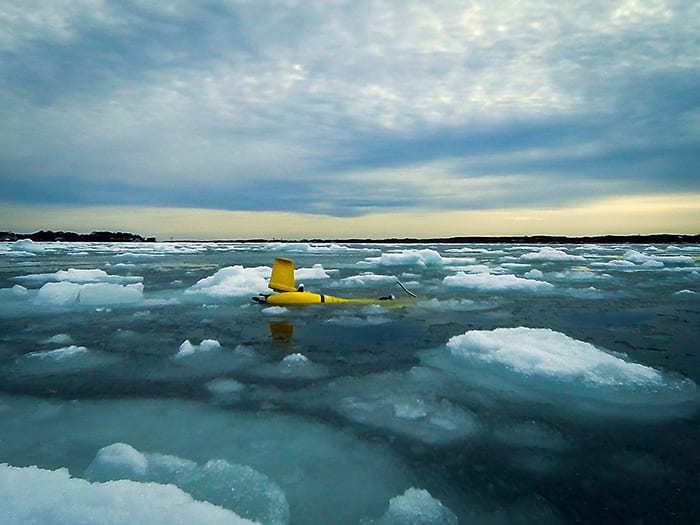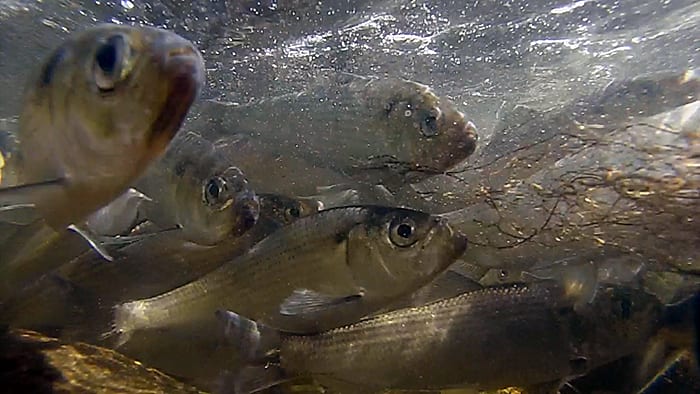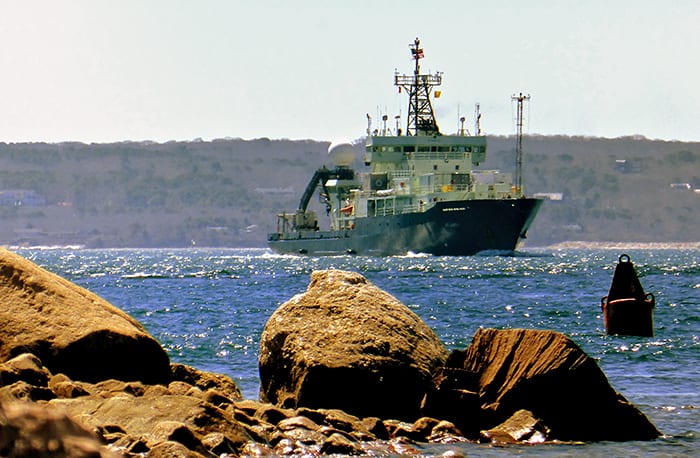Multimedia Items
No Autographs
Alvin generates excitement, no matter where it goes. The deep-diving submersible and its support ship, R/V Atlantis, happen to be in Woods Hole at a time that coincides with the Institution’s…
Read MoreOne Extreme to Another
A team on R/V Mytilus keeps a watch on an expendable spar (X-spar) buoy during testing in an unseasonable February cold snap. WHOI Ocean and Climate Change Institute director Carol Anne Clayson…
Read MoreThe Right Tool
The remotely operated vehicle (ROV) Jason works on the seafloor near the Havre underwater volcano northeast of New Zealand earlier this year. The volcano erupted in 2012 with a force that…
Read More98 in the Shade
Arborists measure the girth of a massive copper beech tree on Challenger Drive on the WHOI village campus that has provided the Woods Hole community with shade and inspiration for…
Read MoreDeep-sea Takeout
Tevnia jerichonana tubeworms sprout from a “sandwich”—an artificial colonization surface made of non-toxic plastic. This sandwich was recovered from the seafloor after spending 11 months in a hydrothermal vent habitat along…
Read MoreCatch
When a ship arrives in port, the first line over the side is usually a thin heaving line with a balled “monkey fist” knot on the end that acts as…
Read MoreEndangered Species Day 2015
May 15 is Endangered Species Day. In 2010, a team that included experts from WHOI placed non-invasive DTAGs on one of the largest endangered species, and one that frequents the…
Read MorePrepare to Dive
Alvin, the nation’s only deep-sea research submersible, underwent an extensive upgrade between 2011 and 2014. In March 2014, scientists and engineers tested the new sub in a series of dives under…
Read MoreBit O’ Coral
They look like pancakes, but they are actually bits of living coral called “nubbins” with a green band of algae growing inside their skeleton. Coral animals form their hard skeleton…
Read MoreEarning his Stripes
WHOI biologist and environmental scientist Neel Aluru recently received an Outstanding New Environmental Scientist award from the National Institute of Environmental Health Sciences (NIEHS). NIEHS created the award to encourage the…
Read MorePenguins on (Shrinking) Ice
Four penguins march over a massive cornice on their way to a secluded part of the Cape Crozier colony, on the rim of the Ross Sea in Antarctica. The birds,…
Read MoreRemembering Nereus
“Nereus was an amazing, groundbreaking robot and the only currently active vehicle in the world that could reach the extreme depths of the ocean trenches,” wrote explorer and filmmaker James…
Read MoreRisk Assessment
A WHOI team led by research assistant Richard Sullivan and including guest student Charlotte Wiman (left) and research assistant Mollie McDowell prepares to survey waters off the island of Ebadon in…
Read MoreCircle of Life
On Earth Day 2015, members of the Woods Hole and WHOI communities gathered to celebrate the life of a European beech tree that has stood on campus for the last…
Read MoreMany Hats
Ocean scientists often need to be more than “just” an expert in his or her field of study. While loading the research vessel Cabo de Hornos in Valparaiso, Chile, recently, a…
Read MoreEmbryonic AUV
Every oceanographic vehicle is brought from concept to reality by a team of engineers. The autonomous underwater vehicle (AUV) Sentry was conceived by Barrie Walden, Al Bradley, and Dana Yoerger…
Read MoreSafe Haven
Clouds of buestreak fusiliers swarm over giant “plates” of tabletop coral (Acropora spp.) on the reefs at South Brother Island in the Chagos Archipelago. During a recent coral coring expedition with…
Read MoreFat Chance
A fatty compound responsible for the rapid, mysterious death of phytoplankton in the North Atlantic may hold unexpected promise in cancer research. Originally published online July 1, 2010
Read MoreAtlantis, Fore and Aft
Ships mean a lot to Dick Pittenger. He retired after 32 years in the Navy as an admiral and led WHOI’s Marine Operations Division from 1990 to 2004. During that…
Read MoreBurning Fat
A common algae commercially grown to make fish food holds promise as a source for both biodiesel and jet fuel. Researchers Greg O’Neil of Western Washington University and Chris Reddy,…
Read MoreTune In
Ocean science and exploration is increasingly reliant on live video streaming from research vessels at sea to incorporate larger, more interdisciplinary teams of scientists and to make more research opportunities…
Read MoreJust Like Home
The unusually cold winter allowed WHOI engineers to do something they normally can’t do: test equipment in polar conditions. Here, an autonomous Slocum glider operated by the Mixing Measurement and…
Read MoreRace Home
Like salmon, river herring are anadromous—they spend most of their life at sea and make annual spawning migrations up rivers to release their eggs. Although the size of these spring migrations…
Read MoreHome Port
The research vessel Atlantis spends most of its time transporting the submersible Alvin from dive site to dive site. It recently returned to Woods Hole, however, to act in its other role…
Read More
